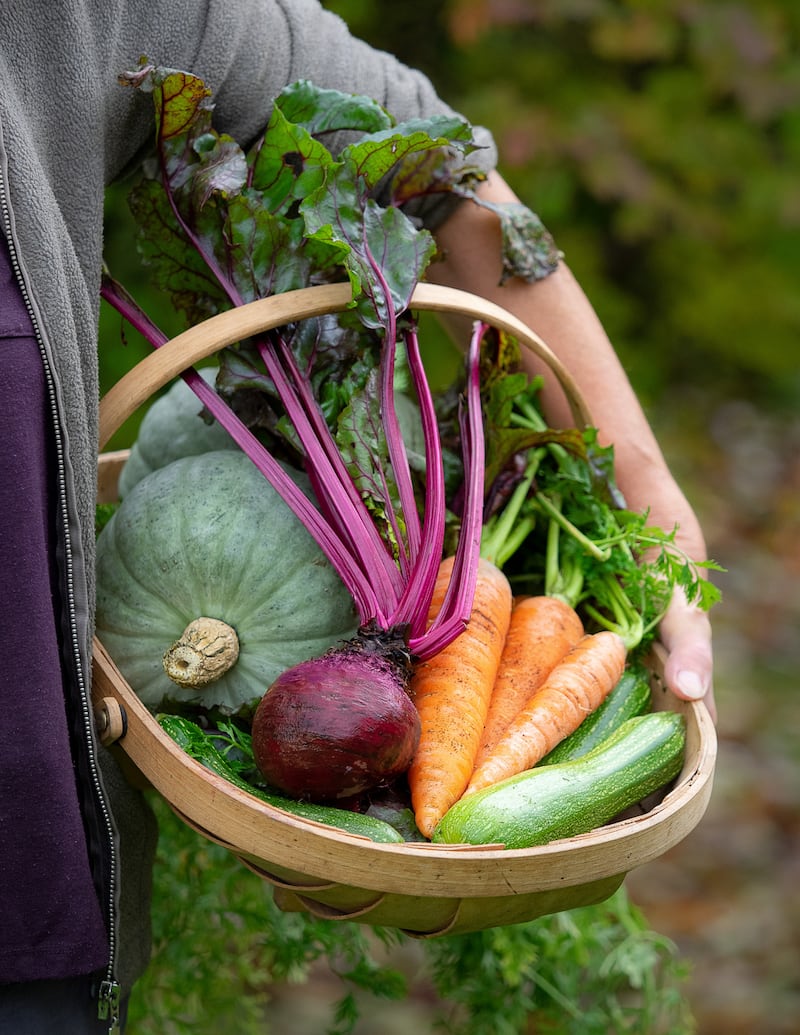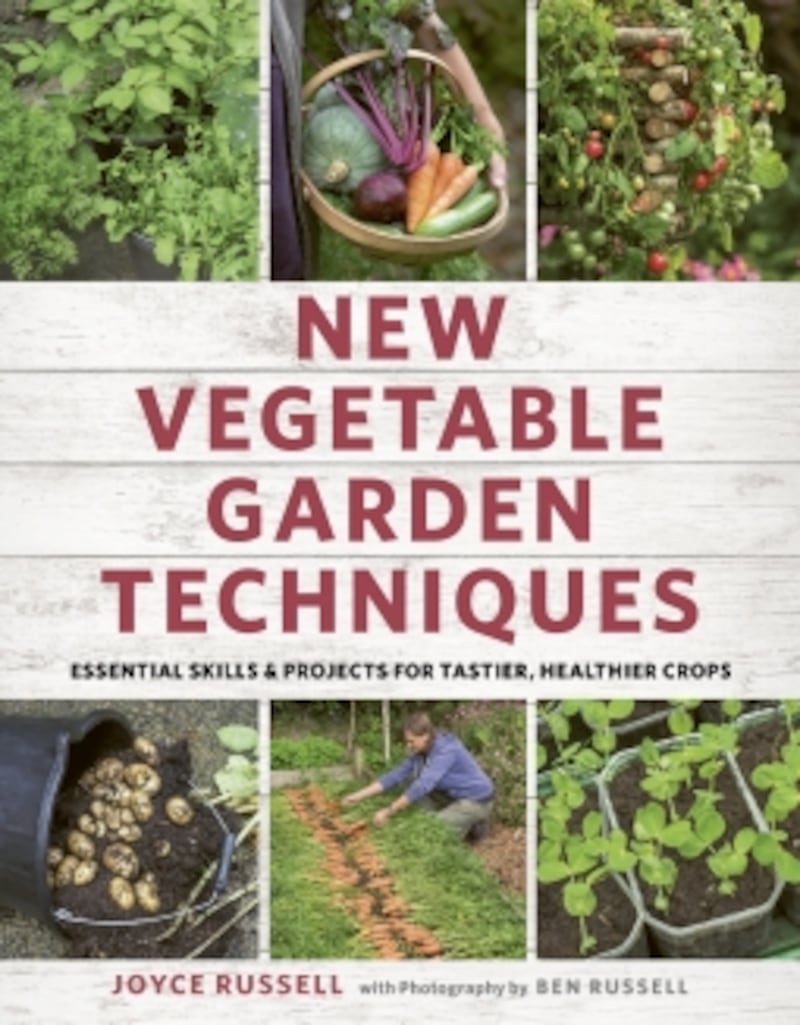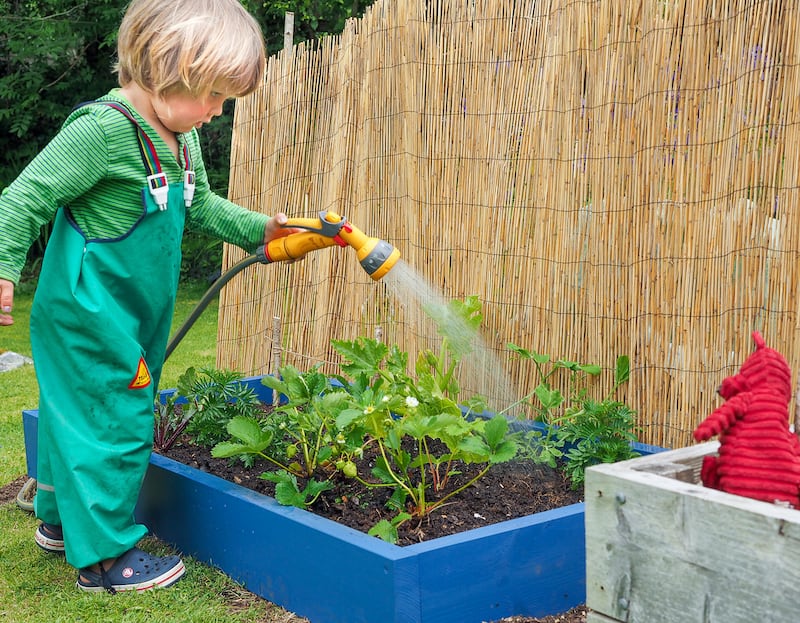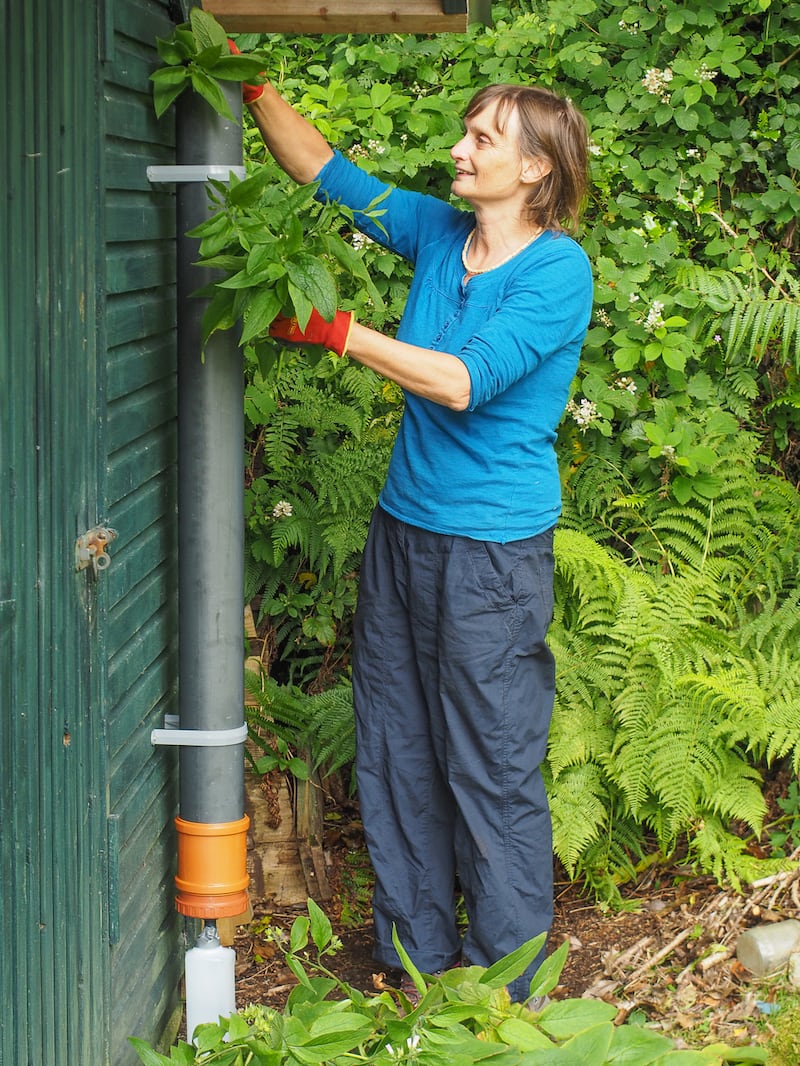If there’s one lesson that gardening teaches – and in truth it teaches many – it’s that none of us comes into this world a great gardener; instead we become so through a gradual process of trial and error combined with natural curiosity and a willingness to learn from mistakes.
In the case of the west Cork gardener and writer Joyce Russell, that lifelong process began in her childhood in the Yorkshire dales under the expert tutelage of her grandfather Wilfrid, who shared with her his love of growing food. "He had a lovely glasshouse where he taught me how to grow the most fabulous tomatoes [still one of her all-time favourite kitchen garden crops] and delicious grapes amongst other things. He was also an extremely practical person. I learnt so much from him about woodwork and about putting old odds-and-ends to good use."
Those same practical skills stood Russell in valuable stead when she and her photographer husband Ben made the move to west Cork in the late 1970s, first to renovate a family friend’s old farmhouse and then to self-build their own country home near Bantry, where they live to this day.

Overcoming the challenges of the damp, cool Irish climate to grow barrow-loads of their own vegetables, fruit and herbs “on a south-facing slope halfway up a mountain that turned out to be something of a frost pocket” is an artform that Russell has perfected over the ensuing decades as she’s tended to the couple’s half-acre kitchen garden.
She’s shared some of that knowledge in her two previous books, the best-selling The Polytunnel Book (2011) and Build a Better Vegetable Garden (2016) as well as in her monthly contributions to Kitchen Garden Magazine. Her latest book, New Vegetable Garden Techniques (White Lion Publishing, £18.99/€21.99), is a hugely useful, hands-on guide to creating a properly productive, sustainably-managed kitchen garden.
“It is,” says Russell, “the book that I wish I’d had when I started growing fruit and vegetables”, and the distillation of many decades of careful trials and observations on her part. Within its handsomely illustrated pages (the photography is the work of husband Ben Russell), readers will find step-by-step explanations of many different kinds of techniques including how to create a lazy bed, boost pollination rates for better crops, home-save seed and make organic liquid feeds alongside many modern horticultural methods including tips on how to use biological pest controls, grow a range of delicious micro-greens, and frost-proof plants using soil-heating cables, plastic, fleece and netting.

“One of the great things about gardeners is that most of us love to share what we know. So for example, it was a neighbour of mine – a lovely man – who first showed me how to make lazy beds. Despite the fact that he had two bad hips, he did it so easily that it was as if he was cutting butter . . . ”
While there’s much in her new book for beginner gardeners to get their teeth into, it also offers plenty for the more seasoned gardener. I loved, for example, the well-illustrated, practical instructions on how to make a liquid-feed barrel and a comfrey fertiliser press, both of which are accompanied by clearly-written, science-based explanations of the usefulness of liquid nettle, comfrey, seaweed and manure feeds to bolster plant health and boost crop yields.
"I have a science degree from Sheffield University [where she studied biochemistry and microbiology] and have always approached any gardening challenge with the attitude that there's a scientific solution to almost every problem. You just need to work out how to go about it."

The book also contains oodles of down-to-earth advice and encouragement for gardeners with tiny growing spaces, including how to make a “quick and easy bucket garden”, a herb barrel and how to grow potatoes in sacks. For those of us who struggle when it comes to the best ways of harvesting, using and storing homegrown produce, she explains how to make a simple carrot clamp, plait onions and garlic and gives a detailed list of the various storage methods best suited to different crops. Windfall apples, for example, are best stewed, pureed and frozen; French beans can be turned into a tasty pickle or chutney; currants into preserves, wines or liqueurs, while a great way to deal with courgette gluts is to briefly fry them, halved, in butter or oil before popping them in the freezer.
The book’s emphasis is firmly on practical, while the author’s respect for homegrown food runs through its pages like a deep seam of gold. “It’s something that I feel very strongly about and which I hope I’ve passed on to my own three children, all now adults”, says Russell. “More and more research points to the huge health benefits that come with including plenty of fresh vegetables and fruit in our diets.”
Homegrown tomatoes aside (her top variety is the disease-resistant, prolific cherry variety known as Sakura), does she have any personal favourite vegetables? “I wouldn’t be without purple-sprouting broccoli and I do so enjoy growing my own pumpkins. If you can source seed of it, Small Sugar is a fantastically productive mini-pumpkin variety to sow at this time of year. I also love, love, love my own homegrown spuds. Few things are tastier than a bowl of freshly-cooked Charlotte potatoes harvested from the garden the same day . . .”

This Week in the Garden
Climbing plant action: Ornamental climbing plants such as clematis, honeysuckle, potato vine and roses are producing lots of vigorous new growth at this time of year. To prevent these fast-growing young shoots from quickly getting into a messy and unmanageable tangle, use short lengths of garden twine to gently fix them against some sort of sturdy support such as lengths of strong wire fastened horizontally to a wall or fence.
If you haven’t already spread a 5cm-deep mulch of manure and a handful of organic pelleted fertilizer around the base of these sorts of climbing plants, then try to do it soon to encourage healthy, floriferous growth throughout the summer.
Protect fruit plants: Fruit trees and bushes coming into blossom at this time of year can sometimes be hit by a hard night frost that destroys the flowers and prevents any fruit from forming, so it's a good idea to have some lengths of garden fleece to hand just in case. Gently draped over the plant, fleece will protect it from damage but make sure to remove it the following morning to allow pollinating insects to reach the flowers.
Seaweed fix: If you have a lot of young seedlings and transplants waiting to go out in the garden later this month, giving them regular weak feeds of diluted liquid seaweed is a great way to keep them healthy, happy and well-nourished as well as to promote good root growth. Rich in minerals, vitamins and enzymes that are key to healthy plant growth, liquid seaweed can also improve germination rates when seed is soaked in it overnight prior to sowing.
Stockists of organic liquid seaweed include all good Irish garden centres as well as online stockists such as Cork-based Fruithill Farm. fruithillfarm.com
Dates for Your Diary
Sunday, April 20th, Monday April 21st, ISNA Plant Fair, Farmleigh, Phoenix Park, Dublin (10am-5pm): Wide range of choice, Irish-grown plants and garden accessories for sale. irishspecialistnurseriesassociation.com
Saturday, April 27th, Altamont Walled Garden, Altamont, near Ballon, Co Carlow (11am-1pm): "Spring Beauties" workshop with guest speakers including well-known gardeners June Blake of June Blake Gardens in west Wicklow and Carl Wright of Caher Bridge Gardens in Co Clare. facebook.com/pg/Altamont-Plants.
Burtown House & Gardens, Co Kildare: "Growing Food at Home", a one-day workshop with organic kitchen garden expert Dermot Carey. burtownhouse.ie.
Dalkey Garden School, "Mornington", Saval Park Road, Dalkey, Co Dublin (10am-1pm): "Planting Summer Containers" a half-day workshop with gardener Annemarie Bowring. dalkeygardenschool.com
Until the end of April, June Blake's garden, near Blessington, Co Wicklow: "A Month of Tulips", a celebration of these loveliest of spring flowering bulbs. juneblake.ie.
Until June 3rd, Kiltrea Bridge Pottery, Kiltrea Bridge, Enniscorthy, County Wexford: Farewell sale as this much-loved family business closes its doors to the public following the retirement of its owner and chief potter Michael Roche and his wife Johanna. kiltreapottery.com




















